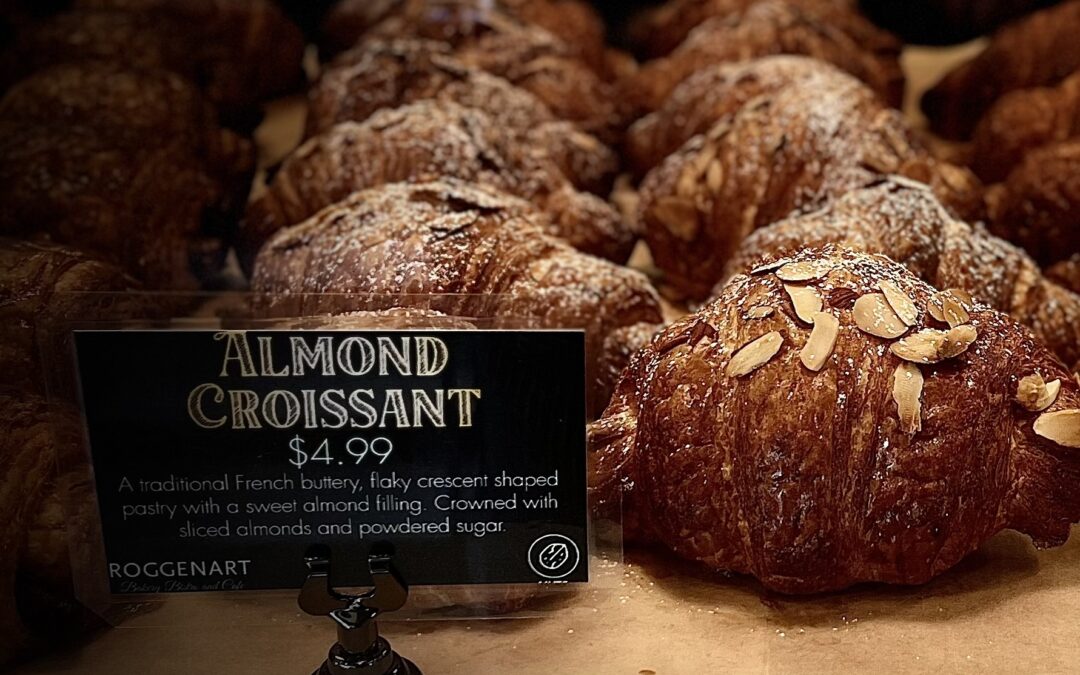Croissant vs. Donut: Which is Healthier?
When it comes to choosing a morning treat, many of us find ourselves torn between two bakery favorites — the croissant and the donut. Both are golden, buttery, and satisfyingly sweet in their own way, but when you look a little deeper, the croissant takes the lead as the healthier choice. At Roggenart, where European craftsmanship meets modern café culture, we bake our croissants fresh every morning using traditional techniques — offering a pastry that’s not only delicious, but also made with quality ingredients and balance in mind.
Let’s break down why the croissant deserves the healthier crown.
1. Calories and Fat Content: The Numbers Don’t Lie
A classic glazed donut typically contains around 250–300 calories and 12–15 grams of fat, most of which come from deep-frying. Donuts are cooked in oil, meaning they absorb a significant amount of trans fats — the unhealthy kind linked to heart disease and cholesterol spikes.
In contrast, a plain butter croissant averages 230–270 calories with 11–12 grams of fat, but here’s the key difference: croissants are baked, not fried. The fats in croissants come primarily from butter, which contains natural saturated fats rather than the hydrogenated oils found in most fried pastries. That’s a big nutritional win.
2. Ingredients: Quality Over Quantity
Donuts often include added sugars, artificial flavorings, and glazes that can push sugar content up to 20 grams or more per serving. A Roggenart croissant, on the other hand, is made from just a few simple, high-quality ingredients — European butter, flour, yeast, water, milk, and a pinch of sugar. No artificial additives, no shortcuts.
This simplicity allows for a lighter pastry that fuels you without the sugar crash that often follows a donut. The croissant’s balanced carbs and fats help sustain energy longer, making it a smarter choice for your morning or afternoon pick-me-up.
3. Preparation: Craftsmanship Matters
The difference in health value also lies in the preparation. Donuts are typically mass-produced and deep-fried in batches of oil that are reused multiple times, which can degrade oil quality and increase harmful compounds.
At Roggenart, our croissants are hand-rolled, layered, and baked fresh daily — never fried. Each croissant goes through a slow fermentation process, allowing for a lighter texture and natural rise. This traditional European baking method not only enhances flavor and aroma but also results in a pastry that feels indulgent without being heavy.
4. Portion and Pairing Control
Donuts are often covered in glaze or filled with cream, doubling sugar intake. A plain or almond croissant from Roggenart offers flavor through natural ingredients rather than excess sugar. Pair it with a cappuccino or latte, and you have a balanced, satisfying breakfast or snack — one that feels like a treat but still fits within a mindful lifestyle.
5. The Roggenart Difference
At Roggenart, we believe in quality over excess. Our croissants are baked fresh every morning in all locations, using time-honored recipes that highlight real ingredients. From buttery classic croissants to chocolate, almond, and ham & cheese variations, every bite embodies the care of European artisan baking.
So, next time you’re choosing between a croissant or a donut, remember: while both bring joy, the croissant — especially a Roggenart croissant — offers the better balance of flavor, freshness, and nutrition. It’s the indulgence you can feel good about enjoying every day.
Visit your nearest Roggenart café today and treat yourself to a croissant made the right way — baked fresh, never fried. 🥐✨

